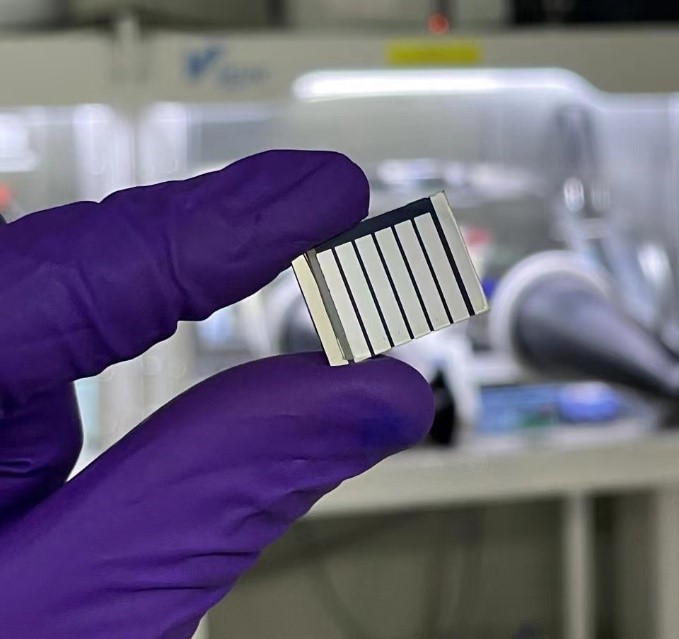The Chinese Academy of Sciences said this week that its researchers have fabricated homogenized perovskite films that could increase the efficiency and stability of perovskite solar cells.
The scientists said they addressed the typical phase segregation issue that inevitably takes place inside perovskite films and affects both the power conversion efficiency and thermal stability of perovskite PV devices. This is a troublesome issue, with illumination, such as sunlight, disrupting the delicately arranged composition of elements within mixed-halide perovskites.
“We all know from previous work that cations in different groups are distributed inhomogeneously, but how exactly these cations are distributed and the reasons behind it and how it affects efficiency remain unclear,” said researcher Xu Pan. “We visualized the out-of-plane compositional inhomogeneity along the vertical direction across the perovskite films and identified the underlying reasons and the potential impacts for devices.”
The researchers said in “Out-of-plane cations homogenize perovskite composition for solar cells,” which was recently published in Nature, that they measured the vertical distribution of cations FA+ and Cs+ in the film. They discovered Cs+ aggregation at the film's bottom and FA+ concentration at the upper interface.
“Then we found that cations in different groups crystallize and transform at very different rates,” said Pan, in reference to the main cause of the film inhomogeneity.
Popular content
In order to create more homogeneous films, the group used an additive known as 1-(Phenylsulfonyl)pyrrole (PSP), which they said successfully fulfilled its mission.
With the optimized perovskite film, the academics built a solar cell with an active area of 1 cm2. Tested under standard illumination conditions, this device showed a power conversion efficiency of 26.14%, an open-circuit voltage of of 1.164 V, a short-circuit current of density of 26.14 mA/cm2, and a fill factor of 85.74%. The cell was also able to retain 92% of its original efficiency after 2,500 h.
The scientists also said that an undisclosed third-party entity has certified the cell efficiency at 25.2%.
This content is protected by copyright and may not be reused. If you want to cooperate with us and would like to reuse some of our content, please contact: editors@pv-magazine.com.



By submitting this form you agree to pv magazine using your data for the purposes of publishing your comment.
Your personal data will only be disclosed or otherwise transmitted to third parties for the purposes of spam filtering or if this is necessary for technical maintenance of the website. Any other transfer to third parties will not take place unless this is justified on the basis of applicable data protection regulations or if pv magazine is legally obliged to do so.
You may revoke this consent at any time with effect for the future, in which case your personal data will be deleted immediately. Otherwise, your data will be deleted if pv magazine has processed your request or the purpose of data storage is fulfilled.
Further information on data privacy can be found in our Data Protection Policy.